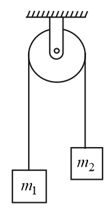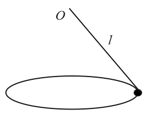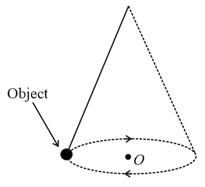Embibe Experts Solutions for Chapter: Laws of Motion, Exercise 1: Exercise-1
Embibe Experts Physics Solutions for Exercise - Embibe Experts Solutions for Chapter: Laws of Motion, Exercise 1: Exercise-1
Attempt the free practice questions on Chapter 5: Laws of Motion, Exercise 1: Exercise-1 with hints and solutions to strengthen your understanding. Beta Question Bank for Engineering: Physics solutions are prepared by Experienced Embibe Experts.
Questions from Embibe Experts Solutions for Chapter: Laws of Motion, Exercise 1: Exercise-1 with Hints & Solutions
Three forces and act on an object simultaneously. These force vectors are shown in the following free body diagram. In which direction does the object accelerate?

A block of weight is suspended by a string of fixed length. The ends of the string are held at various positions as shown in the figures below. In which case, if any, is the magnitude of the tension along the string largest?
An ideal string is passing over a smooth pulley as shown. Two blocks and are connected at the ends of the string. If and tension in the string is , mass is equal to

A point mass is suspended from a light thread of length fixed at , is whirled in a horizontal circle at constant speed as shown. From your point of view, stationary with respect to the mass, the forces on the mass are:

A small object, suspended by a string, rotates with constant speed, in a horizontal circle as shown in the figure. Point is at the centre of the circle. Neglect air drag. Which one of the following statement is correct?

A particle of mass is made to move with uniform speed along the perimeter of a regular hexagon, inscribed in a circle of radius . The magnitude of impulse applied at each corner of the hexagon is:-
A cannon of mass (including a shell of mass ) is at rest on a smooth horizontal ground, fires the shell with its barrel at an angle with the horizontal at a velocity relative to cannon. Find the horizontal distance of the point where shell strikes the ground from the initial position of the cannon:-
The length of a spring is when a force of is applied on it and the length is when force is applied. Then the length of spring when force is applied is:
